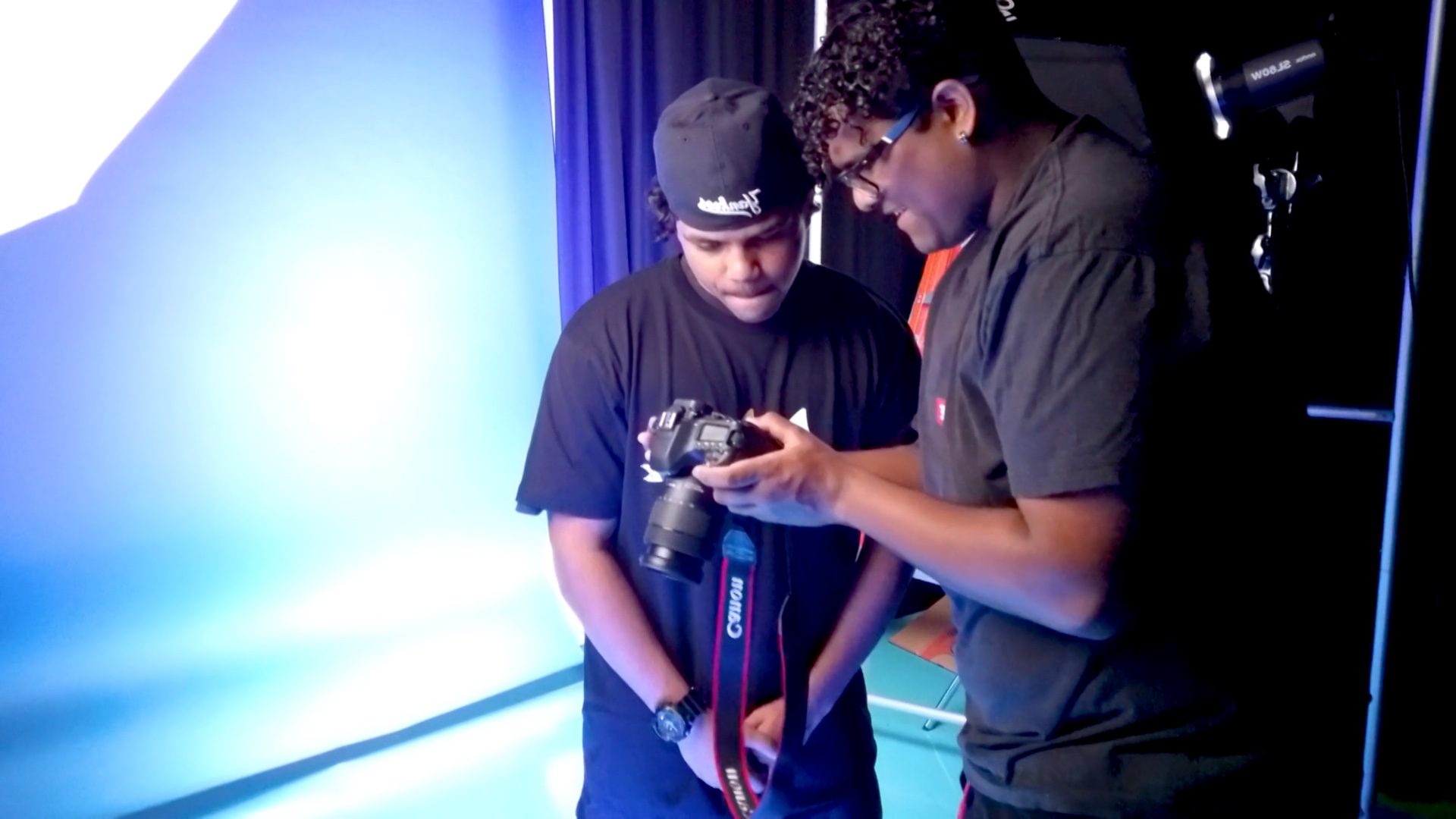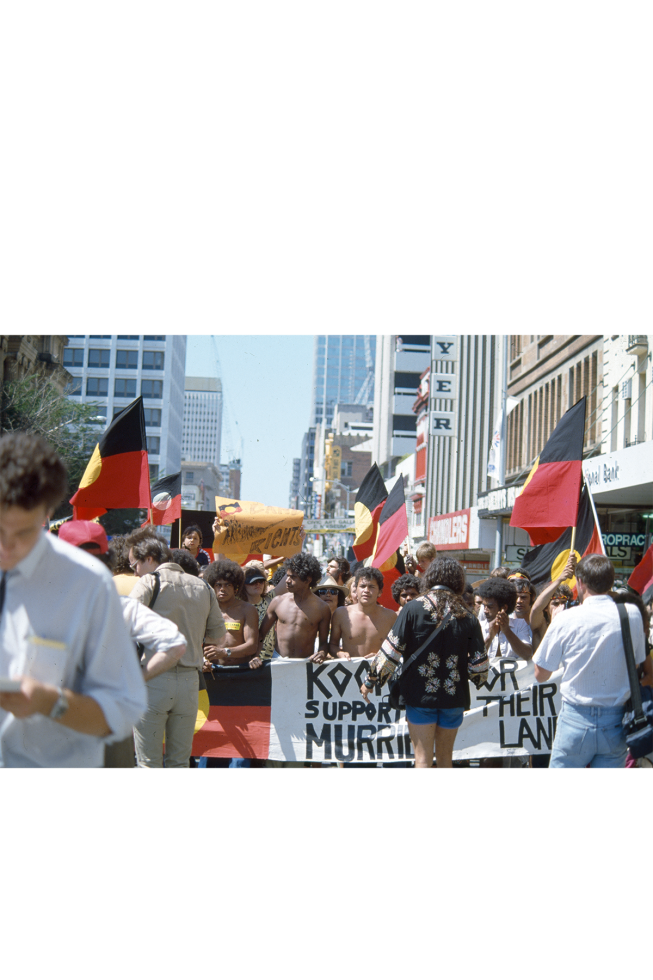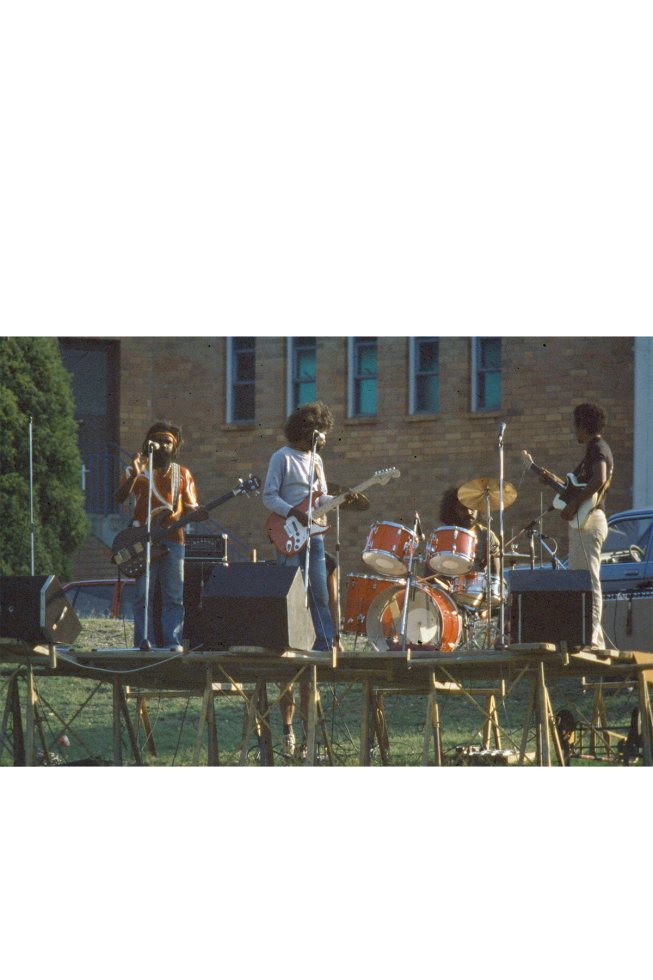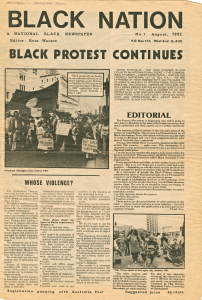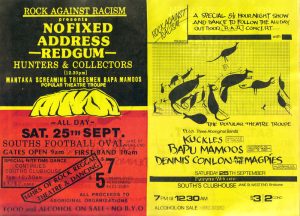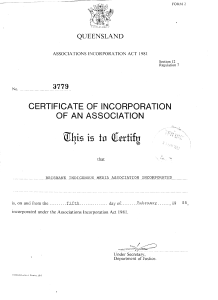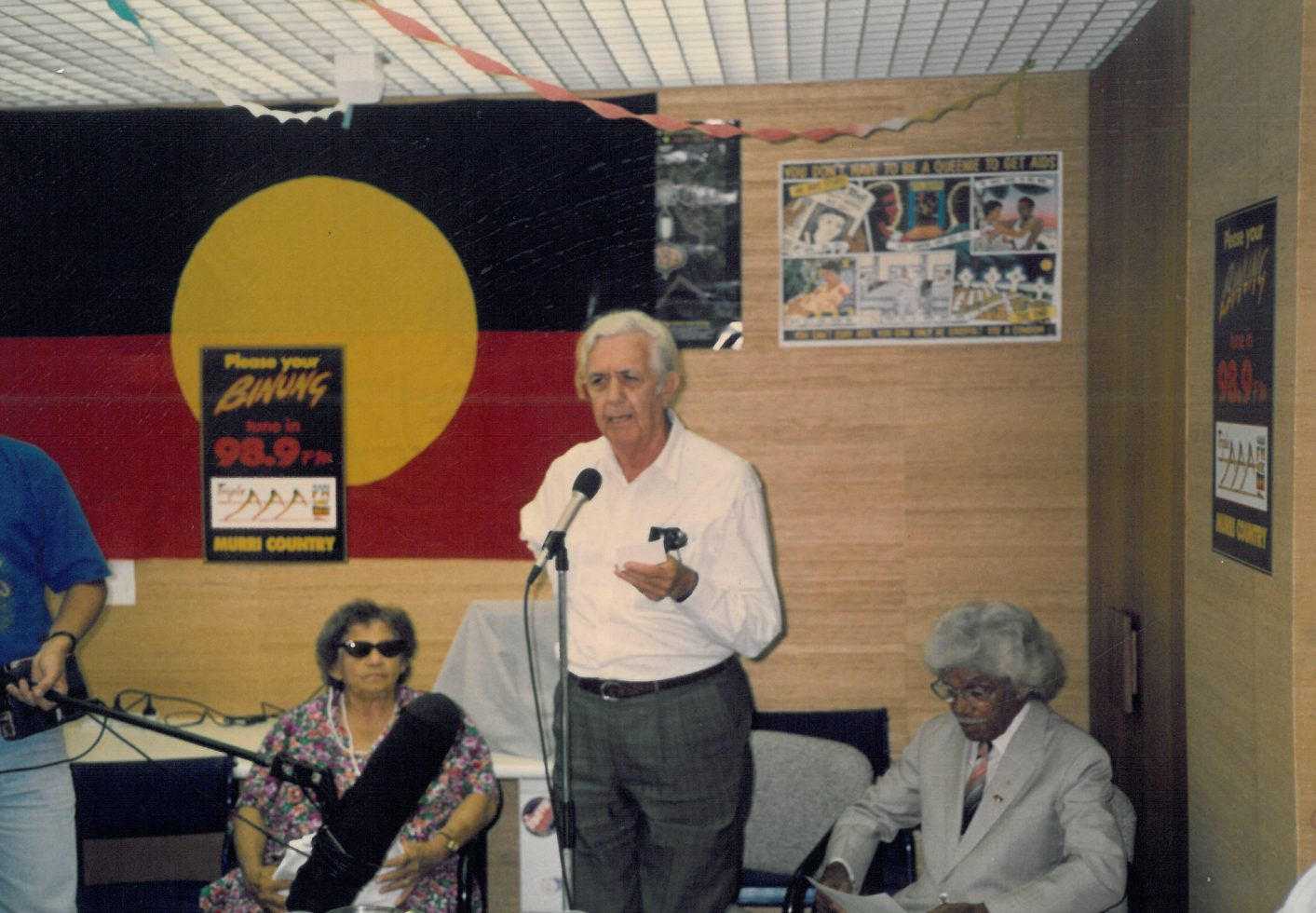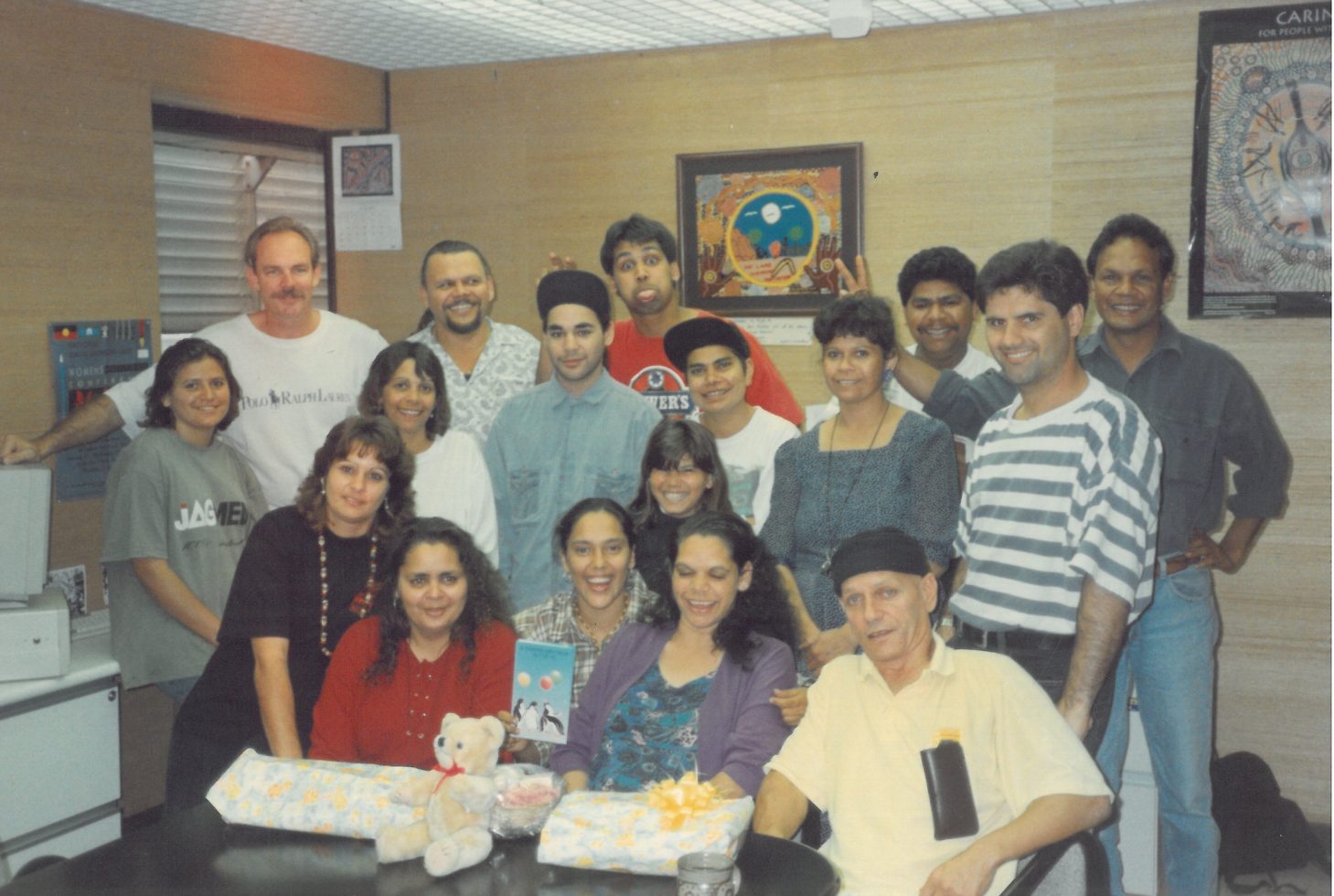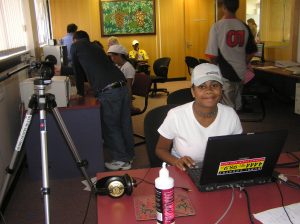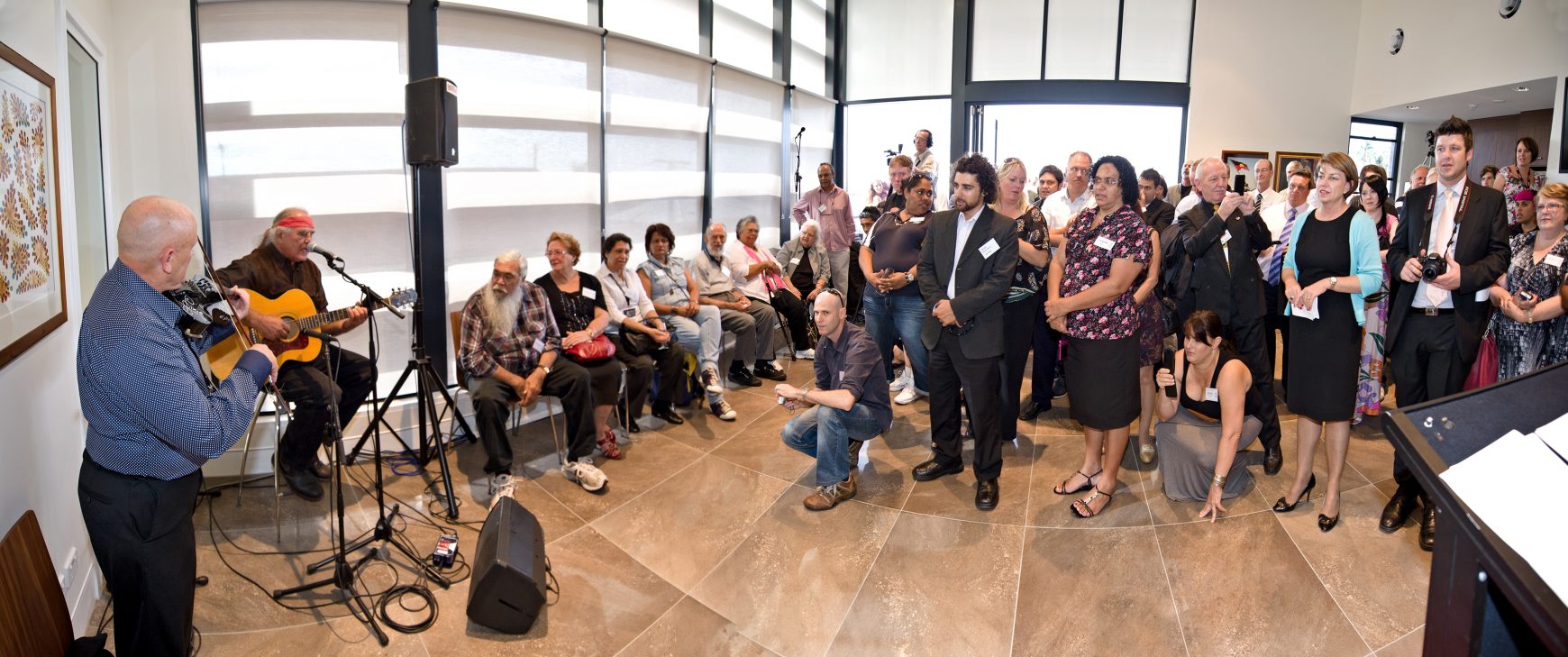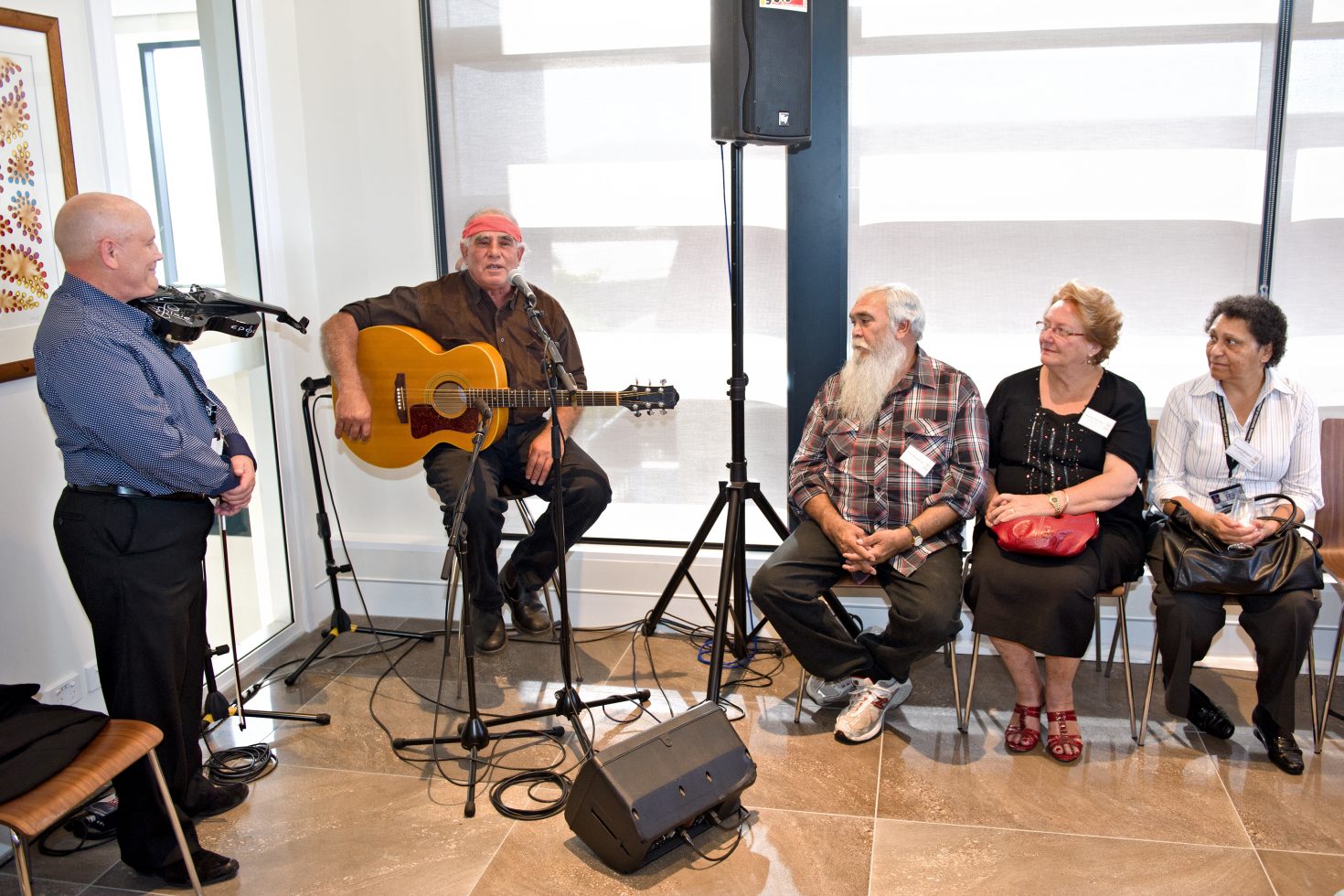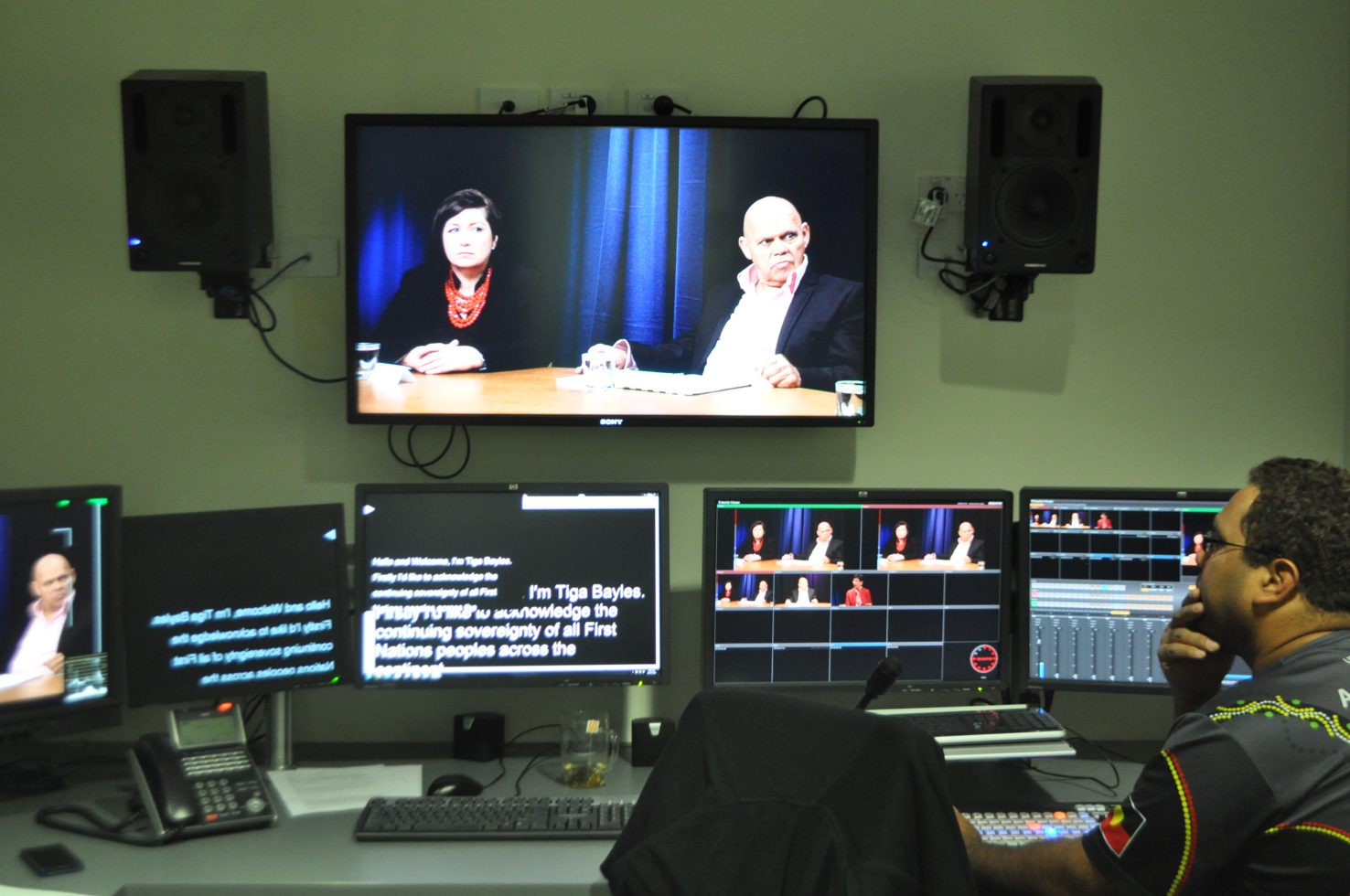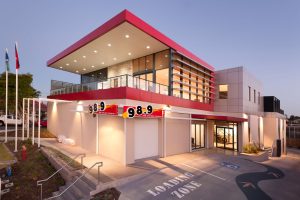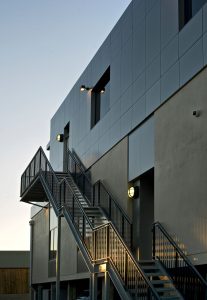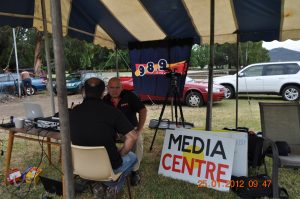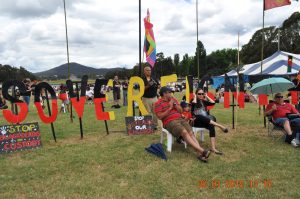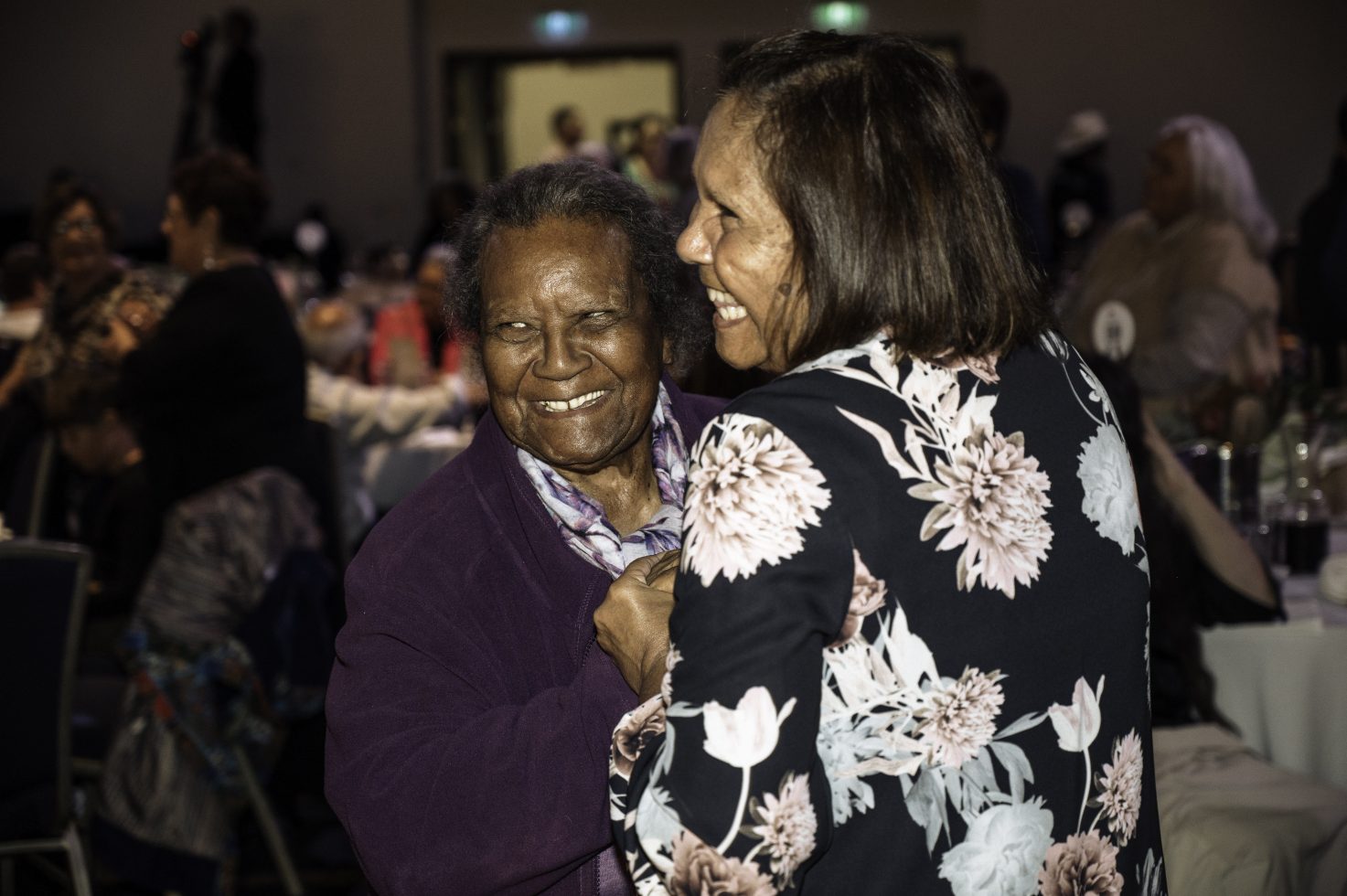OUR JOURNEY
Since 1983 Triple A has been at the centre of First Nations media across the country. Our support for Aboriginal and Torres Strait Islander artists and arts workers, activists and community begins with grass roots fights for our rights and continues today!

80s Strength
In the early 80’s the strength and resilience of Elders in spite of racism and oppression brought about fundamental shifts in First Nations peoples rights.
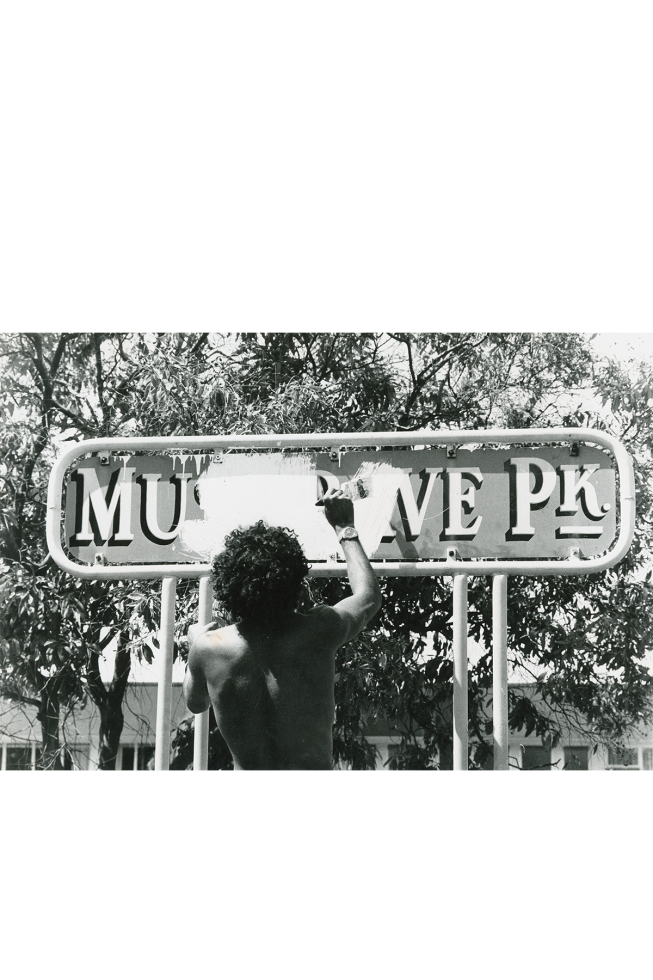
National Indigenous Broadcast Conferences
Hosted in Brisbane and was organised by BIMA and Murrimage.

90s THRIVING
The 90's saw our people hit the ground running with an unstoppable force.
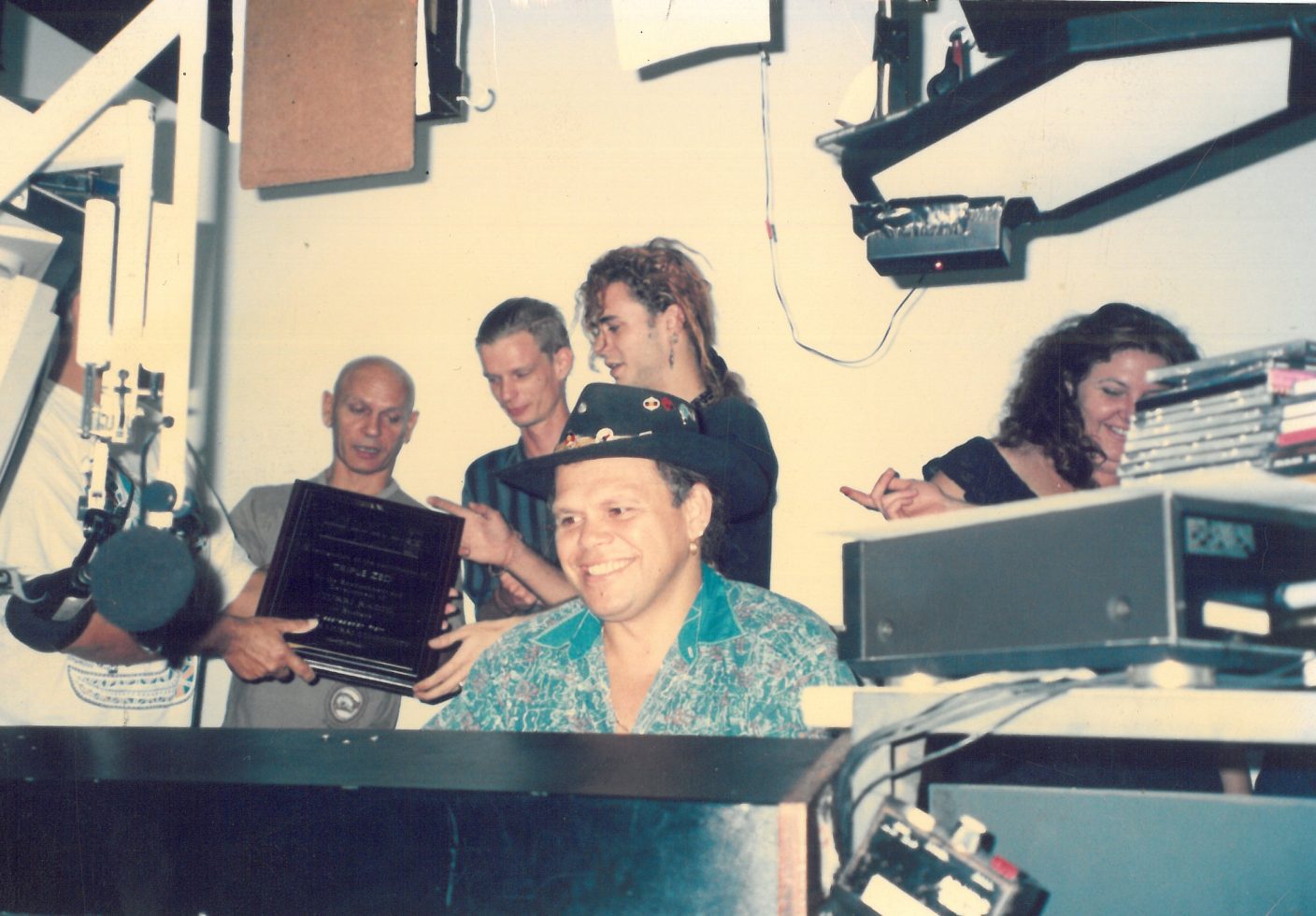
Launch of 'Living in Jagera'
Volume 1 CD produced by Triple A and launched at Woodford.
First outside broadcast
The first of 17 outdoor broadcasts from Gympie Muster occurs and the first outside broadcast van is launched in King George Square.
Exclusive AFL Coverage
Triple A was awarded exclusive AFL coverage in Brisbane, broadcasting three live games each weekend.
BIMA Projects
Launch of culturally-appropriate radio, print and online resources for First Nations people of Australia.
TRIPLE A Training
Established to deliver nationally accredited qualifications in media to students in remote, regional and urban areas of Australia

2000s DEADLY
The 2000s were a time of expansion for Triple A and BIMA with numerous significant production, projects and publications.
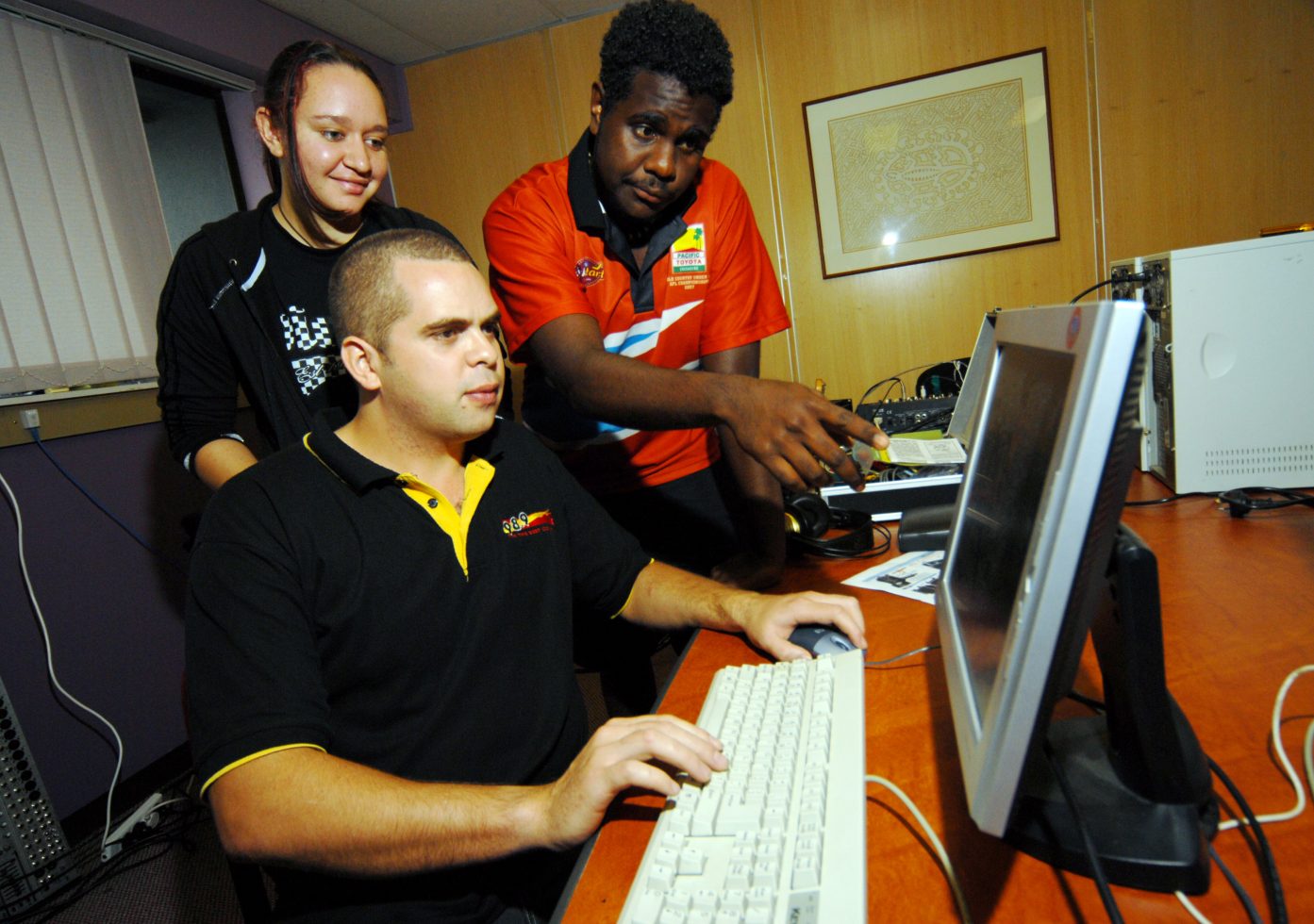
Corroboree 2000
Walk for Reconciliation, Triple A brought mob around the country together.
Sydney Olympics
Triple A held a live outside broadcast from the Sydney Olympics.
Rebrand
Radio 4 Triple A was rebranded to 98.9FM to position the station as a key player in the Brisbane media market.
Dissolution of ATSIC
This event created doubts about the future funding of Indigenous Media in Australia. Key people in the organisation went to Canberra to lobby about importance of Black Media.

2010s deadly
Triple A builds a new state of the art media hub in West End and relocates in 2011. Moving into the digital age Triple A begins embraced video production within programs, radio promotion and training.
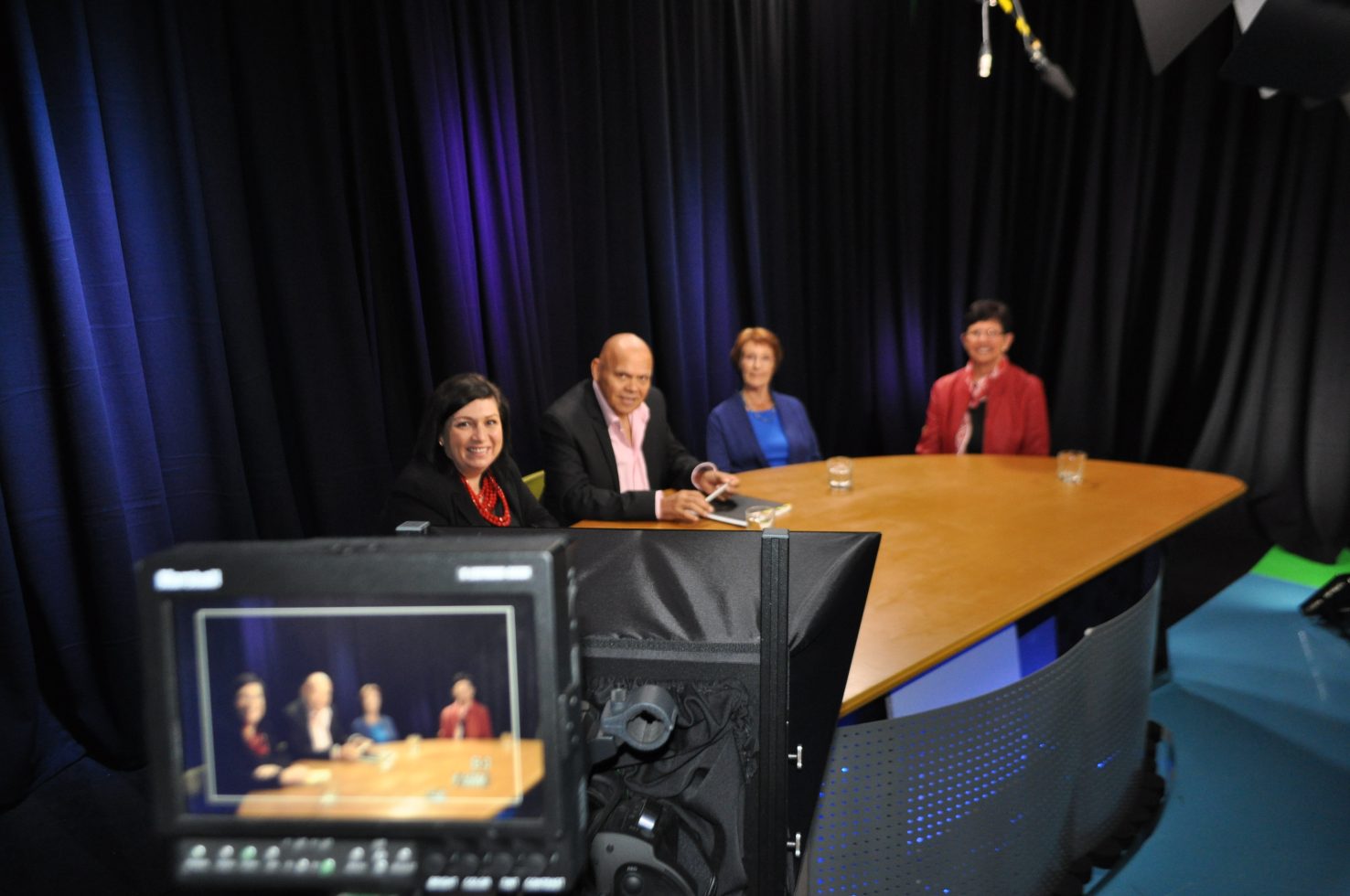
Deadly Choices
IUIH/Deadly Choices and Triple A Partnership
20 Years
Triple A celebrates 20 years of broadcasting.

2020s deadly
Triple A transforms into a multimedia agency, focusing on delivering key messaging for our community. We are embracing new technologies and expanding services such as campaign delivery and major community events.
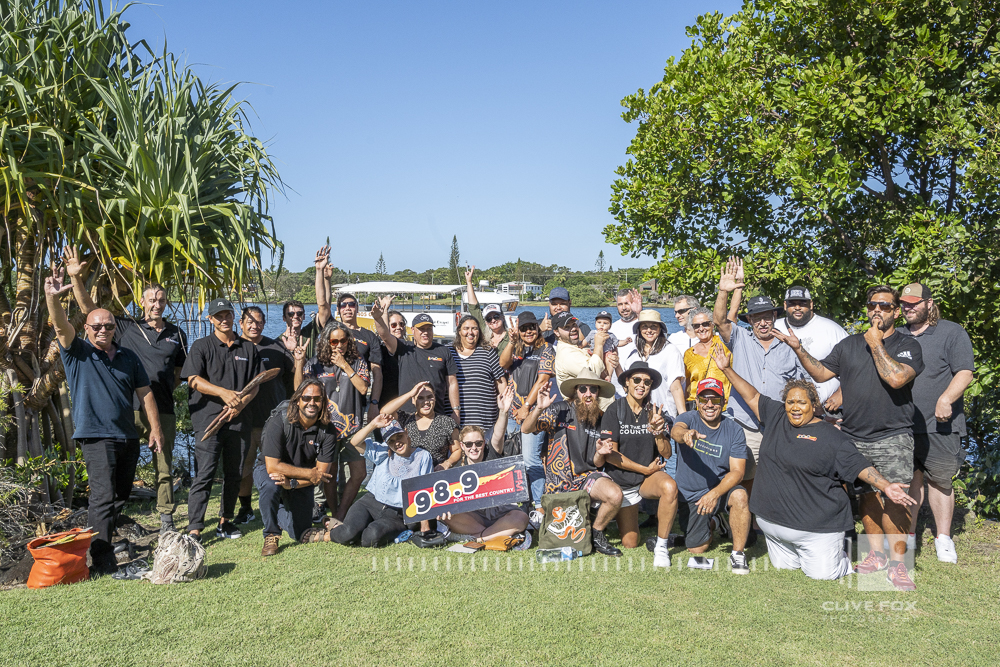
GLOBAL PANDEMIC
In responde to the COVID-19 global pandemic, Triple A began broadcasting critical health messaging, lock down information and facts through GPs in partnership with the Aborignal Medical Services.

80s Strength
In the early 80’s the strength and resilience of Elders in spite of racism and oppression brought about fundamental shifts in First Nations peoples rights.

1982: Commonwealth Games Protests
Protest committees organised to fight for our rights!
1982: Black Nation
The first edition of “Black Nation”, a national black newspaper was printed in Brisbane in mid 1982 and distributed locally, nationally and internationally. Two subsequent editions were printed in 1982, one in 1983 and the final edition in 1985.
1982: Rock Against Racism
This event took place just five days before the start of the Commonwealth Games in Brisbane, and all proceeds were used to support the Black protest activities during the games. Organised by Ross Watson (1944-182) and Peter Gray on behalf of Rock Against Racism (RAR) Sydney.
1983: Indigenous Radio
In October 1983 a small group of people in Brisbane began to meet regularly to plan and prepare an Aboriginal radio program for Brisbane Blacks.
1984: Murri Voices On Air
Sponsorship by the Brisbane Aboriginal and Islander Child Care Agency helped the development of the 4ZZZ project.
1986: Australian Broadcast Tribunal
Late in 1986 an Expression of Interest form for the acquisition of a Special Interest broadcast licence was prepared and submitted.
1988: BIMA Incorporated
BIMA became incorporated in 1988 and was the first Aboriginal Radio Station in a capital city.
1989: National Indigenous Broadcast Conferences
Hosted in Brisbane and was organised by BIMA and Murrimage.

90s THRIVING
The 90's saw our people hit the ground running with an unstoppable force.

1990: Aboriginal licence
The area of special interest most deserving of a licence was determined as Aboriginal by the ABT.
1991: Final Hearing
The Family Radio appeal was eventually disallowed by the Federal Court and the ABT held it’s final hearing in Brisbane about mid 1991.
1993: 4AAA Goes to air
On 6th April 1992, radio 4AAA went to air under our own Aboriginal broadcasting licence.
1996: Launch of 'Living in Jagera'
Volume 1 CD produced by Triple A and launched at Woodford.
1996: First outside broadcast
The first of 17 outdoor broadcasts from Gympie Muster occurs and the first outside broadcast van is launched in King George Square.
1997: Exclusive AFL Coverage
Triple A was awarded exclusive AFL coverage in Brisbane, broadcasting three live games each weekend.
1998: BIMA Projects
Launch of culturally-appropriate radio, print and online resources for First Nations people of Australia.
1999: TRIPLE A Training
Established to deliver nationally accredited qualifications in media to students in remote, regional and urban areas of Australia

2000s DEADLY
The 2000s were a time of expansion for Triple A and BIMA with numerous significant production, projects and publications.

2000: Corroboree 2000
Walk for Reconciliation, Triple A brought mob around the country together.
2000: Sydney Olympics
Triple A held a live outside broadcast from the Sydney Olympics.
2003: Let’s Talk
Developed as a national flagship talkback show. The show was developed to fill the void in Indigenous Current Affairs & provide a vehicle for First Nations mob around the country to participate in informed debate about issues affecting First Nations Mob.
2004: Rebrand
Radio 4 Triple A was rebranded to 98.9FM to position the station as a key player in the Brisbane media market.
2004: Dissolution of ATSIC
This event created doubts about the future funding of Indigenous Media in Australia. Key people in the organisation went to Canberra to lobby about importance of Black Media.
2004: Cape York Media Pathways
Media training delivered across the Cape and communities.
2007: National Apology
Prime Minister Kevin Rudd delivered a national apology, a key highlight as the country took a step towards Reconciliation

2010s deadly
Triple A builds a new state of the art media hub in West End and relocates in 2011. Moving into the digital age Triple A begins embraced video production within programs, radio promotion and training.

2011: New Building
Triple A opens a new building in West End
2012: Celebrating 40 Years & 30 Years
To celebrate 40 Years of the Aboriginal Tent Embassy Lets Talk is broadcasted live from Canberra. 30 Years since the 1982 Games and Protests is also celebrated.
2012: Deadly Choices
IUIH/Deadly Choices and Triple A Partnership
2013: 20 Years
Triple A celebrates 20 years of broadcasting.
2014: Let’s Talk Panels
Focused discussions on Decolonisation, Police Brutality, Stolen Wages, Treaty, Incarceration
2018: I Heard it on the Radio
A QLD State Library exhibition featuring newly commissioned digital stories, never-before-seen photographs, historical documents and radio station ephemera. I heard it on the radio looks at 25 years of 98.9FM Murri Country and its influence in giving a voice to Aboriginal and Torres Strait Islander people on the radio.

2020s deadly
Triple A transforms into a multimedia agency, focusing on delivering key messaging for our community. We are embracing new technologies and expanding services such as campaign delivery and major community events.

2020: lost daylight documentary
Triple A Vision produced a documentary on the life of Aunty Dawn Daylight. The film has been a finalist in several festivals and won the 2022 First Nations Film Maker Award at the West End Film Festival.
2020: GLOBAL PANDEMIC
In responde to the COVID-19 global pandemic, Triple A began broadcasting critical health messaging, lock down information and facts through GPs in partnership with the Aborignal Medical Services.
2021: Rebrand Back To Triple A
98.9FM Murri Country Rebranded back to Triple A, and organisation repositions itself as a full suite media agency.
2021: Brisbane Blacks Live
Triple A events delivers the inaugural Brisbane Black Live music festival.
2022: Brisbane NAIDOC Ball
Triple A events delivers Brisbane NAIDOC Ball celebrating black excellence in the South-East Queensland community.
2023: 30 Years
Triple A celebrates 30 years of broadcasting and reveals new brand artwork “Empowering Movements” by Nunukul woman Casey Coolwell-Fisher.

